When creating your membership site, it’s easy to get caught up in the content creation or membership site features. However, there is one hidden aspect of a membership site you don’t want to neglect: marketing.
Marketing is how you get your membership site out in front of prospective members. Without it, it can be incredibly difficult for fledgling membership sites to bring in new members. While it’s possible to subsist on member referrals and word of mouth alone, marketing your brand can help boost your membership numbers and bolster your revenue.
In this guide, we’ll walk you through developing a marketing strategy and plan so you’re fully equipped to market your membership.
Content Chapters
CHAPTER 1:
Open vs Closed Marketing Strategy
In this section, we’ll go over two different common membership marketing strategies: closed and open.
We’ll teach you what the differences are between these two strategies, as well as what types of memberships these strategies work best with.

When it comes to membership sites, there are two common marketing strategies: open and closed. Open marketing strategies allow people to sign up for membership all year round without limits. Closed marketing strategies, on the other hand, only allow new member signups for a limited time. There are pros and cons to both approaches, but both have been used by successful membership sites.
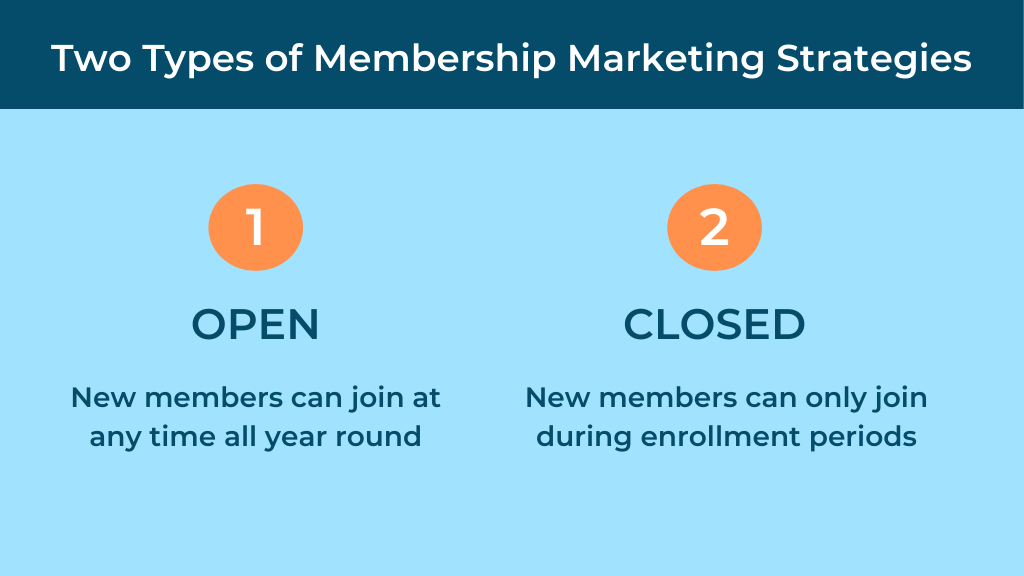
Open Strategy
Leaving your membership site enrollment available all year round makes it easier for new members to sign up. You don’t have to worry about capping your income – new members can sign up at any time.
However, because members can sign up at any time, it may be easy for them to think, “Oh, this is interesting. I’ll investigate it/sign up later,” but then they never get around to it.
Open strategy is best for membership sites that:
Routinely release new content
Are predominantly self-serve
Allow members to jump in right away, whether by getting involved in the community or accessing content
Open Strategy Pros
- Revenue not restricted by limited signups
- Great for offerings that allow immediate access
Open Strategy Cons
- No sense of urgency
Closed Strategy
A closed marketing strategy only allows new signups for a specific period of time. Doing this can invoke a sense of urgency, which can be a strong incentive for signups. After all, no one likes missing out. An added time element can be what pushes people from interest into action.
The closed strategy is also good for membership sites that want to limit how many members they have. In the case of a membership site that has “live” events – whether that is live video calls, chats, presentations, or streaming – a closed membership site may be based on practicality. Having a live chat with ten thousand members could prove difficult to monitor or a live video stream with a thousand people tuning in could blow your site’s bandwidth (and your budget) for the month. In such cases, limiting your membership site sign ups might be the way to go.
Closed Strategy Pros
- Sense of urgency
- Great for “live” elements
Closed Strategy Cons
- Lose out on new members in the “closed” period
CHAPTER 2:
Craft Your Offer
In this chapter, we’ll introduce you to the importance of personalizing your offer.
We’ll go over the basics of an offering and a number of important factors to consider.

Once you have settled on a marketing strategy, it’s time to really hone your offer. After all, this is how you will be selling your membership. You want the offer to be irresistible. However, irresistible offers don’t make themselves – they are a result of solid planning and research.

Make sure you have the right membership name
Naming your membership site is more important than you think. After all, it’s the first thing your prospective members will come into contact with. You want a catchy name, but you also want it to make sense and pique your target audience’s interest. We go into more detail about how to choose the best name for your membership in our guide: How to Start a Membership Site.
Clearly Articulate the Benefits of Joining
Your membership offering is the best thing ever, right? So make sure you tell prospective members that! However, it’s also important to tell them why your offering is the best out there.
The world market is saturated with businesses claiming to be “Number one” or “World-Class.” However, many of those businesses fail to tell you why they are the best at what they do. The best way to connect with prospective members is to tell them what you can do for them. How you do it. Why they should choose you. Give them solid reasons, not marketing cliches (here are 10 big ones to look out for).
Not sure where to start? Well, think about the problems that your membership offering will solve for your members. Will it help them get in shape? Will it streamline their cooking routine? Will it help them get a job in tech by teaching them a new coding language?
Identify your target audience’s problems, then tell them how your membership offering solves it and what results they will be able to get.
In short, you want to make sure you check these three boxes:
What your offering is
What problem it solves
How it solves it
So, using this strategy, the examples we mentioned earlier might say:
If they want to get in shape: Our offering will give you specialized meal plans created for your body type so that you can lose weight quickly (and healthily).
If they want to spend less time in the kitchen: Our offering gives you access to a database full of easy, quick meals that all take less than 20 minutes.
If they want to transition to a job in technology: By the end of our sixteen week python course, you will have a complete portfolio guaranteed to impress tech companies.
Choosing the Right Pricing Plan
Choosing the correct pricing plan for your membership is as important as creating the right messaging. It won’t do you any good to get your offer in front of prospective members if they’ll turn up their nose at the price.
However, it’s just as important that you don’t sell your offering short. Make sure you charge what it’s worth. Doing so can be terrifying – after all, what if no one pays for your membership offering because it’s too expensive?
But if you really put the time in and came up with an offering that your intended audience needs (like we talk about in our How to Start a Membership Site Guide), you have nothing to fear.
However, if you’re still not sure where to start when coming up with pricing, check out our guide, Choose Pricing and Convert Website Visitors.
Monthly vs Annual
Another important aspect of pricing is to decide on your payment term. Do you want to be paid in monthly payments or yearly? Or both?
There are pros and cons to both options. Monthly payments mean that each month you will be receiving a regular amount of income. However, this also means that while the income feels more steady, there is also a chance that members will drop out somewhere in the middle, leaving you with less revenue than if you had charged yearly.
Another benefit to monthly payment is that the price for members to get started is lower, which may make it more tempting to some.
Yearly payments, while they may seem much steeper in price, gives you the entire year’s revenue in a single bulk payment. The member is guaranteed membership for a year and you come away with a hefty chunk of change. It is important to remember, though, that the member will not pay you until the next year.
Why Should They Join Right Now?
There are various ways to market your membership, but one selling point it to tell them why they should invest in your members right now. After all, many people may be interested in your offering, but browse away and subsequently forget about it.
If you make an argument for why they should become a member immediately, you have a higher likelihood of convincing them to sign up.
Creating this sense of urgency can happen in a number of ways. For example, if you have a closed strategy, the urgency is built in. They literally can’t sign up any other time of the year so they need to act fast.
For an open strategy, establishing a sense of urgency can be more tricky. One of the best ways (but by no means the only way) to do this is to point out a problem they have, then present your membership as the solution. You can also focus on results members experience when using your membership. So, for example, if you had a fitness membership, you could showcase a picture of results and say something like, “This could be you in 3 months! Start today for $X.”
The more urgency you inspire, the more likely a prospective member will sign up.
Can you offer guarantees?
Guarantees make people feel better about buying things. If there is anything you can guarantee in your membership, it can become a great tool for marketing.
Just be sure not to over-promise. You don’t want to guarantee something and set yourself up for trouble if you can’t deliver.
CHAPTER 3:
Email List Building
Welcome to email lists! In this chapter, we will go over what an email list is and how you can use it your membership’s advantage.
We’ll also give you pointers on how to get people to join your email list.

Email lists are a list of emails that you have gathered from prospective members or actual members alike. You can send emails to this list of addresses offering information, updates, promos, and more.
Creating and maintaining an email list is a great way to communicate with your prospective and existing members, whatever you are sharing. In fact, there are many email marketing statistics that show just how effective email list building and marketing is. Check some of those statistics out here.
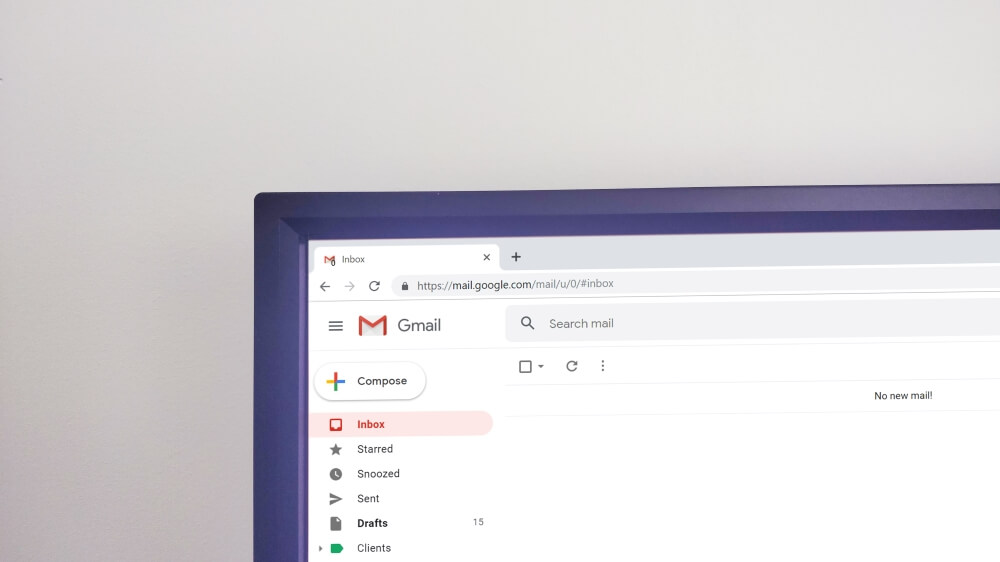
Why Email Lists?
Well, first, email lists can help you woo prospective members who aren’t quite ready to commit. You can send them enticing offers, more information about your membership, and establish yourself as a trustworthy investment.
You can split your email lists into separate lists, too. That way, you can better target your content to your audience. You wouldn’t want to spam your existing members with content meant to nurture leads.
When email lists are used correctly, they can help establish trust amongst your existing members, as well. Here are some email list best practices for establishing trust.
How you use your email is ultimately up to you, but they are a great place to begin when thinking about marketing.
What You Need To Build an Email List
Many have recognized the power of email lists, so there are many different tools out there that you can use. First and foremost, you should select a email marketing automation tool.
Email marketing automation tools allow you to collect emails and add them to a list easily. Then, when you are ready to send out an email, many tools have a design interface where you can build your email from scratch. When the email is finished, the email marketing automation tool can automatically send it out to all the addresses in your list.
This is why you need a email marketing automation tool. When your list gets to a certain size, sending out emails to each address individually becomes mind-numbing work and not a good use of your time.
Luckily, many email marketing automation tools are low cost, at least when you’re first starting out. If you’re not sure where to start looking, check out this list of 10 Best Marketing Automation Tools for Small Business.

Lead Magnets & How to Use Them
Lead magnets are an additional resource you can offer in exchange for the reader’s email address. A common place to see lead magnets are in blog content, but you can add them to all sorts of other content, too.

While the main content is stand alone, a lead magnet may offer extra insight or resources, such as the content’s topic put into action or a template for readers to download.
You will often see lead magnets offered in the following formats:
Video(s)
PDF downloads
Email courses
eBooks
Though this is by no means an exhaustive list. There are many other imaginative types of lead magnets out there.
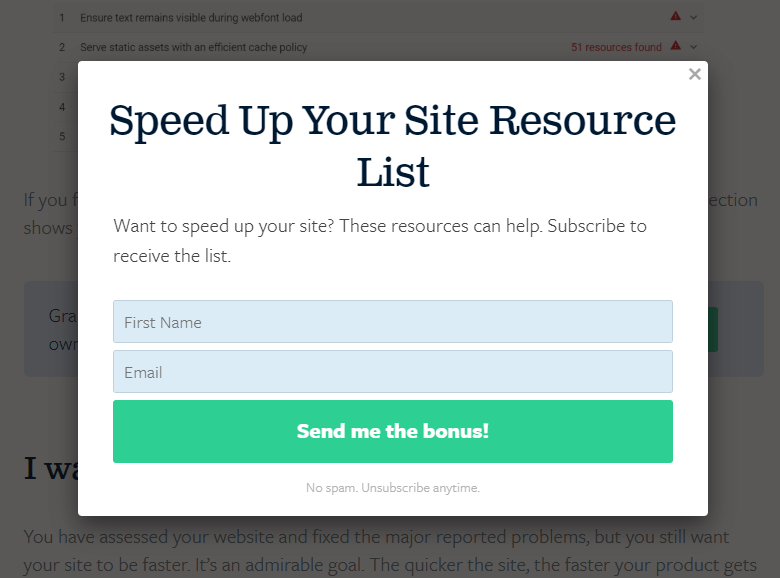
Lead magnets are so popular in the marketing community because they give readers an incentive to share their email address. Now you don’t have to beg for their email or just cross your fingers that they’ll sign up. Instead, you create additional content that they want. Oftentimes, readers consider this a fair trade: their email for content that they want.
How to Use Your Email List
Once you have an established email list in an email automation tool, you can begin to send out emails.
But what should you send them?
While some of the answer may vary based on who the audience is, sending along valuable tips and advice is usually a safe route to go. Brainstorm ideas within your membership offering’s niche. You could create an email course, or have a monthly tutorial.
Ultimately, what you offer in your newsletter is up to you and will depend on your offering and audience. However, it’s important to make sure that your content still feels valuable to the recipient. If your emails feel like spam or a gimmick, people will unsubscribe (or worse, mark your email as spam). Here are some best practices to avoid the spam folder, but it’s key to give your readers content that you think they’ll enjoy.
You want them to look forward to your mailings, not dread them.
CHAPTER 4:
Build a Sales Funnel
What’s a sales funnel? Well, we’ll tell you all about it in this chapter.
We’ll teach you the importance of the sales funnel and how to build your own for your membership site.

“Sales Funnel” may sound like complicated marketing jargon, but once explained, its name will make sense. A sales funnel is essentially just the steps someone has to take to become a customer- or, in your case, member.
Think of it like a funnel. At the very top of the funnel, you have the very first step someone takes toward your membership. Let’s say, for the sake of example, that you have a public-facing blog where you promote your membership. You have a lead magnet on several of your blog pages so that people can sign up for your email list.
In this email list, you have created an email series with some valuable and compelling information. At the end of the series, you encourage the reader to sign up for your membership.
If this was your current set up, your sales funnel might look like this:

Visitors land on your site, then give you their email address in exchange for the lead magnet. Then, they are sent the email series, which convinces them to become a member.
The “funnel” portion of this concept comes in here. The sales funnel is the path you want your prospective member to go down – very much like a funnel.
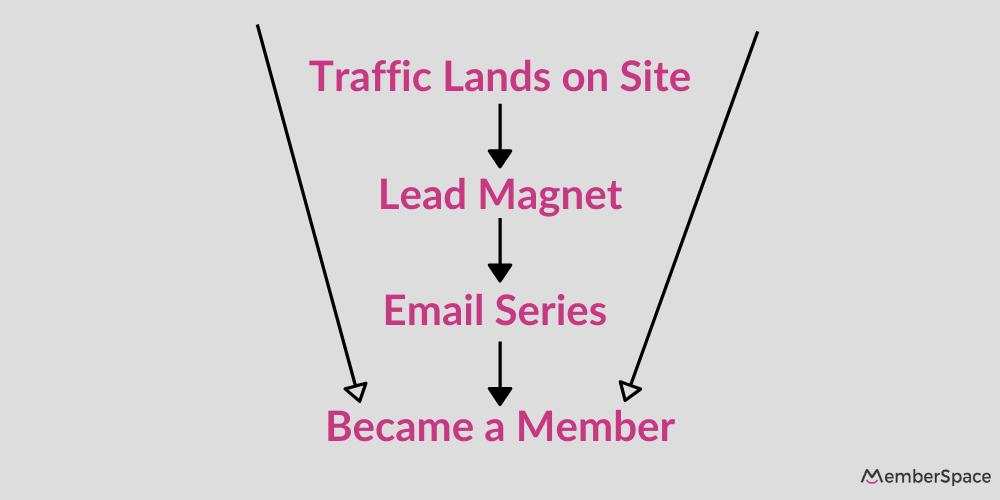
Not all sales funnels need to look like this one. You could have numerous funnels with various entry points. For example, you may have a “Join Now!” button on your blog, which would direct people right to the membership sign up interface. You could also have public-facing video series that could promote your membership, all the while supplying useful information.
However, your end goal is usually the same: getting them to the narrow point in the funnel so they become members.
How to Track Inside Your Funnel
Now, sales funnels show you the ideal route you want prospective members to take. However, as we all know, nothing is perfect. That’s why it’s important to keep track of some metrics in order to see if people are actually following the funnel.
Leads are one metric to keep track of. Leads are the prospective members who come to your site and are interested in your membership. Let’s say that the people who sign up for your email list are your leads.
Out of the number of leads, how many people actually become members? Members that do are called “conversions.” Compare your number of conversions to your total potential leads. It’s inevitable to lose some prospective members – after all, leads are just potential members. You created the opportunity, but it’s up to the person to make the decision.
With these metrics you can tweak your sales funnel and see if anything improves. This doesn’t have to be a big tweak – it could be as simple as changing up your email series. But we recommend you do a lot of testing and measuring to see what works best for you.
The goal, of course, is to get as many conversions (people who sign up for your membership) as possible.
CHAPTER 5:
Drive Traffic to Your Website
How do you get people to visit your site? We’ll tell you in this chapter!
We’ll not only cover how to entice people to visit your site, but also the different types of traffic you can work with.

All of the things we have talked about so far are great: we’ve gone over sales funnels, email list building, and creating an enticing offer. But none of this matters if no one sees these things.
So your next marketing move is to figure out how to get your membership in front of people.

There are a number of ways to do this. The first is to drive people to your website. Your website (if built right) has all the information someone needs to learn about your offering and sign up, so it’s a great place to send them.
When attracting people to your site, it’s important to take into consideration the two different types of traffic:
Paid traffic
Free traffic
You can focus on one type of traffic or make use of both. The choice is yours. But before you choose, make sure you’re informed.
Paid Traffic
Paid traffic refers to traffic that you acquired through paid promotions. These may be ads on other sites or on social media. Paid ads can be pricy, but they can give you a quick spike in website traffic.
However, if you’re not familiar with website ads, you may have to hire an expert to help you with the ad graphics, set up, and more.
Pros
- Faster
Cons
- Expensive
- Expert may be needed
Free Traffic
Free traffic, on the other hand, is cultivated by written content. Contrary to its name, it’s not necessarily free — it costs you time. However, if you take the time to write content for your site, you can generate leads at no cost. This strategy is good as a long-term solution. While paid ads can generate quick traffic bursts, content grows over time. When it’s done correctly, content can keep traffic coming to your site long after your ads have run their course.
However, it can take a while to create content. Not only is it a time-consuming process, but it can take a long time to create enough content to bring in any noticeable site traffic.
Pros
- Good for long term
- Cheap
Cons
- Time-consuming
- Slow to Start
Driving Traffic
Now that you understand the different traffic types, it’s time to come up with a plan of action. There are many strategies you can use when trying to drive traffic, some of which we will briefly touch on here.
One way to start driving traffic to your site is to attend in-person events within your niche or, if you can, even give a presentation. Both of these require some work outside of the office, but it can also be a great opportunity to get your offering in front of more eyes. If people are interested, they can check out your site for more information.
Another strategy is to use affiliate programs. These programs give incentives (usually monetary) to people who bring new members in. Having an affiliate program can help spread the word of your offering, since affiliates will tell their friends and followers to check out your website. If one signs up, the affiliate gets a nice bonus and you get a paying member.
A third potential strategy is to reach out to bloggers or influencers to see if they will test and promote your offering. Often, you will need to pay them for their time and effort, but having a mention of your offering on an influential site can create a burst in traffic.
The last strategy we will talk about is content marketing. We already briefly touched on this when talking about free traffic, but content marketing is when you create content that is designed to bring traffic to your site. You can do this by writing blog posts, guides, ebooks, or even creating videos or podcasts about your chosen niche. If the content performs well, it has the opportunity to bring more traffic to the site and get your offering in front of more eyes.
This is by no means all the marketing strategies you can use. In fact, there are many, many more out there that you could utilize. For a more in-depth look at the different strategies, we recommend this resource: Zapier’s How to Acquire Customers post. It goes over many proven strategies you can use to drive traffic to your site.
Don’t Try Everything At Once – Pick One or Two
It’s tempting to choose a bunch of strategies to implement across the board. However, instead, we recommend starting with one or two strategies and testing them out first. See how they perform, then make some tweaks. Watch the analytics and your leads. Are there any conversions?
This is how you find out the strategies that work best for you. Choosing more than a few strategies can easily become overwhelming – not only to keep up with, but with all the incoming data. By only choosing a few, you can narrow down the results and see direct changes when tweaks are made.
Social media has become a fixture in many people’s lives. From Facebook to Instagram to Twitter, there are all sorts of ways for people to interact with one another. And with businesses, too. Many businesses now have various social media accounts so that their customers can interact with them on a more personal level.
But do you know the main reason many businesses made social media profiles? It’s good for marketing.
When people interact with your social media, it’s a chance for their connections to see the interaction. These interactions can generate leads as people investigate. It’s a chance for exposure to an audience that might have been otherwise unaware of your offering.
Use the platform to share meaningingful information – whether that’s stories or links to your free content. People appreciate meaningful attempts to engage and it’s a chance for you to get your name and offering out there.
Is Social Media Right For You?
Social media is a great marketing platform to utilize. However, it does have some drawbacks. Social media is known for its toxicity, so it’s important not to let yourself get sucked in when engaging with others.
It also requires a lot of interaction. Social media is all about connecting with others and sharing insights and stories. This can be both positive and negative interactions. Any time you put yourself out there, it can be an opportunity for someone to come along and put you down. You have to be prepared for the negative interactions, as well as the positive ones.
Keeping up with social media can also be draining, so you need to make sure you watch yourself. Social media is a 24/7 churn of information and can easily suck you in. Make sure you set boundaries when using social media for marketing purposes, or else you may find yourself replying to Tweets at 4 A.M.
Social media is powerful – but not without its difficulties. However, as long as you are prepared, you can make social media work for you.
What Social Media Platform to Choose
If you have decided to use social media as a marketing tool, which ones should you choose? There are many to choose from, so it can seem like a difficult decision.
As our answer is with many things, do your research. Find out where your target audience hangs out. Do they favor one platform over another? If so, you have your answer. For example, beauty enthusiasts may prefer Instagram, while game developers may prefer Twitter or Reddit.
Choose one social media platform and focus on it. You want to really understand the time commitment and work for the first platform before moving to another. You may even find some tricks that work with your audience that you can bring to a new platform when you’re ready.
But first, try one platform. You can always expand to a new platform later.
CHAPTER 7:
SEO 101
In this chapter we’ll cover the basics of Search Engine Optimization (SEO)
You’ll learn what exactly SEO is and how you can use it to your marketing advantage.

Search Engine Optimization (SEO) refers to the practice of optimizing your website for searches. If you are at all familiar with the internet (which we’ll hazard a guess that you are), you know that search engines, like Google and Bing (or AskJeeves, if you’re old-fashioned), are how you search for websites. Have you ever wondered how they decide how to order the results?
There are many variables that go into answer, but using SEO on your website can help search engines index your site and send it more quality traffic. Good SEO is desirable because not only does it help the search engine index your site, the search engine will reward sites with good SEO and place them earlier than sites with bad SEO.
There are many, many things you can do to boost your SEO. In fact, there are hundreds of blogs, eBooks, and other content out there devoted to explaining and implementing SEO. Because of this, we’re not going to reinvent the wheel. Instead, we’re just going to give you some best practice pointers to get you started. If you really want to hop down the SEO rabbit hole, check out Moz’s Beginner’s Guide to SEO.

Use Target Keywords
Keywords are something you will hear about a lot with SEO. Keywords are words that your target audience searches. If you add keywords to your site in the right way, your site may appear in the search results.
So how do you know what keywords to use? Do keyword research. You can start by asking yourself questions about your audience. What do they want to know? Why are they searching for that? Then, once you have a better idea of what your keywords might be, see how they measure. There are tools out there, like SEMrush and Google Trends that can take your potential keyword and tell you if it’s viable or not.
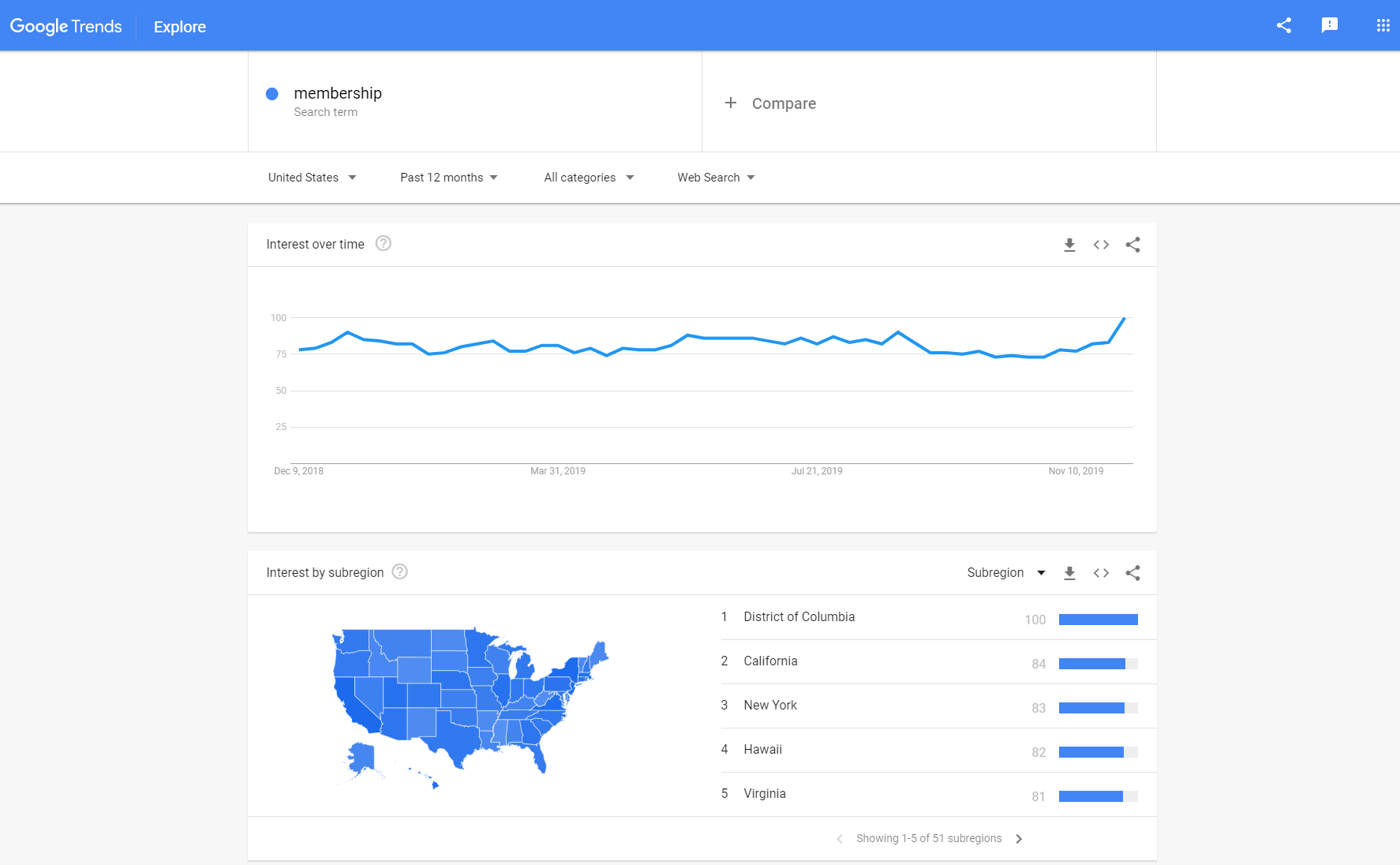
Once you have completed your research, you need to start using keywords around your site. Depending on how you built your site, the process will be different. Many website builders have a dedicated area that lets you add SEO. If you are using SEO on an HTML/CSS site, check out this resource for more information.
Adding keywords to your site helps search engines decide what results you show up in, so it’s imperative that you select good keywords. The better your keywords, the more quality traffic you will receive.
Using Your Content
We talked about using content as a free traffic generator earlier. Now it’s coming back into play; not only does content help generate free traffic, it also can boost your SEO.
To do this, you need to make sure you are creating content directly related to your audience’s keywords. So if you have a fitness membership, you want to create content that is related to fitness, ideally with search terms that your audience is already searching for.
Ask yourself (and do research into) what questions your target audience is asking. If you can find those, you have great subject matter to write about. People search for things on the internet to answer their questions and solve their problems. If your content can do that, you are one step closer to better SEO (and really popular content).
Try, when you can, to link to other blogs and resources. Not only is it helpful to the reader, it can help you establish a good “link profile.” Links are a great way to help build your SEO. When someone links to your site, it gives your site just a smidgen more credibility with search engines. That’s why it’s important to try to build a healthy link structure. For more on how to build links for SEO, check out this resource.
CHAPTER 8:
Promotions
In this chapter, we will teach you about some different types of promotions you can run to entice new members.
There are lots of promotions you can use to your advantage – read on to find the right one for you!

Everyone loves a good deal, so a great way to gain new members is to run promotions! Promotions not only can entice those who are on the fence about your offering, they can also establish a sense of urgency.
Sign up now to get this amazing price! Don’t wait! Offer ends xx/xx/xx at midnight!
But besides the inherent urgency, promotions are a good way to inspire new members to sign up. There are lots of different promotions you can run for membership offerings.

Discounted Price
Discounting your membership price is a staple promotion and pretty simple. You drop the price for a certain period of time and advertise the drop.
Flash Sale
A flash sale is very similar to a discounted price promotion, except for a much shorter period of time. If your normal discounted price promotions run for a month, then your flash sale might only be a few days or hours.
Contingent Discount
You can create a contingent discount by saying something like, “Sign up for a year, get 50% off.” The discount is contingent on them signing up for a year. Time is the most common contingent for membership sites, but you can also have other contingencies, like a specific membership tier.
Free/Low-Cost Trial
Offering free or low cost trials is a great promotion for enticing those who are unsure about your membership. Give them a taste of your membership for a limited amount of time before charging them for the full membership. If they don’t like it, they can cancel. If they do, you have gained a member.
Bonus
Bonus promotions offer additional incentives for signing up. This can be anything from a large piece of content you put together or a month of membership free. You can get creative with the bonuses – just make sure that it’s something your target audience would actually want!
Price Hike
A price hike promotion works best if you are already planning on increasing the price of your membership. If this is the case, you can advertise the impending change and encourage people to sign up before the price increases.
Competition/Giveaways
Having a competition/giveaway is a great way to not only get leads, but also increase your offering’s visibility. Require each entry to give you an email address. This will give you a way to reach them if they win, as well as leads you can send emails to telling them why your offering is so great.
Product/Content Launch
If you are launching something big – like a new course – advertise it! You can do this in tandem with another promotion, or by itself. But you can tout the new content/product as a reason to sign up.
Signup Window Closing
If you have a closed membership, everytime your membership signups are open is a big deal. You can capitalize on this by treating it like a promotion. Promote it to all. Nothing quite motivates people like time.
CHAPTER 9:
Marketing Calendar
The marketing calendar is what keeps hardcore marketers sane.
In this chapter, we’ll talk to you about the importance of the marketing calendar, as well as how you can use it to help you stay on top of your marketing tasks.

Lastly, we recommend you create a marketing calendar. After all, we just gave you a bunch of information and items to put into practice. It can be overwhelming to keep track of everything.

That’s where the marketing calendar comes in. It keeps track of your daily and weekly marketing activities, like writing blog posts, send out newsletters, recording a podcast, and more. It’s also a great place to help you keep track of promotions your running, and plan out new ones for the future.
Having everything in one place helps put everything into perspective and keeps you from being overwhelmed by the sheer amount of marketing items you now have on your plate.
💡 For more information and inspiration to help you build your membership, check out our membership guides for Squarespace, Wix, Duda, and more.
Want more tips for marketing your membership business? Check out these 16 proven marketing strategies for subscription businesses!
For additional resources on marketing and selling digital products and memberships with MemberSpace, check out MemberSpace University, your one-stop resource hub full of step-by-step guides, educational videos, helpful tips and tricks, and more.

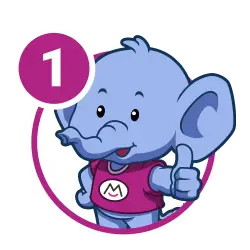
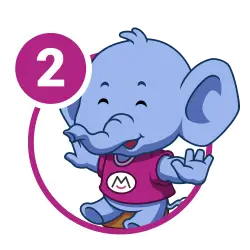
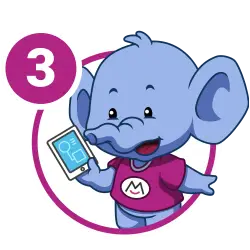


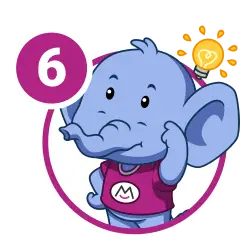
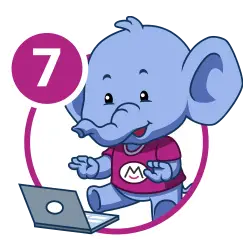
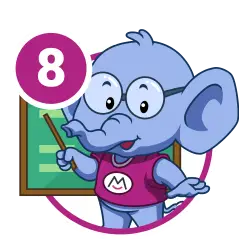
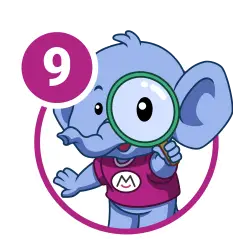




CHAPTER 6:
Using Social Media
In this chapter, we’ll go over how to use social media to your advantage!
Not only will we help you assess whether social media marketing is right for your membership, but also help you decide what social media platform to choose.